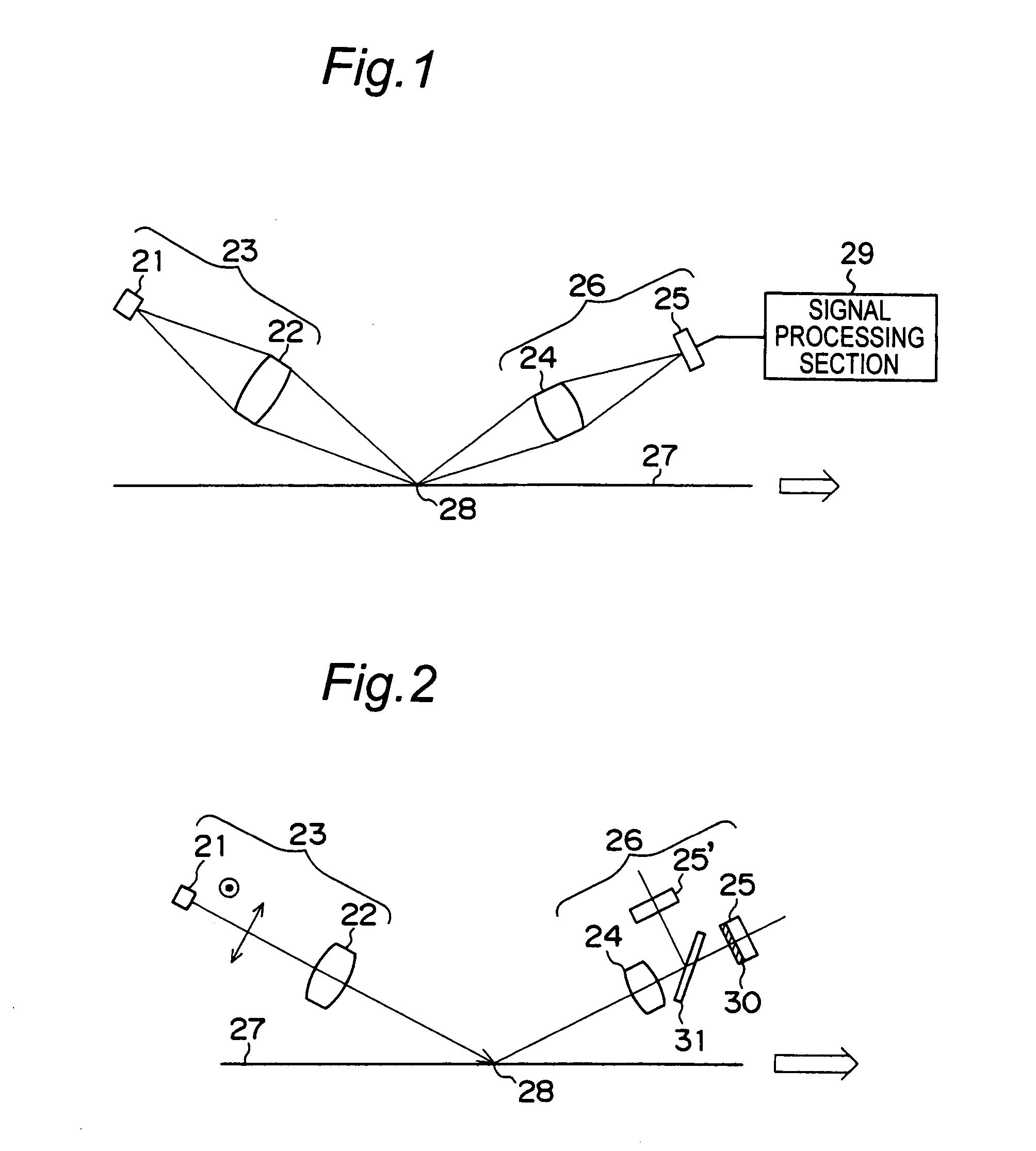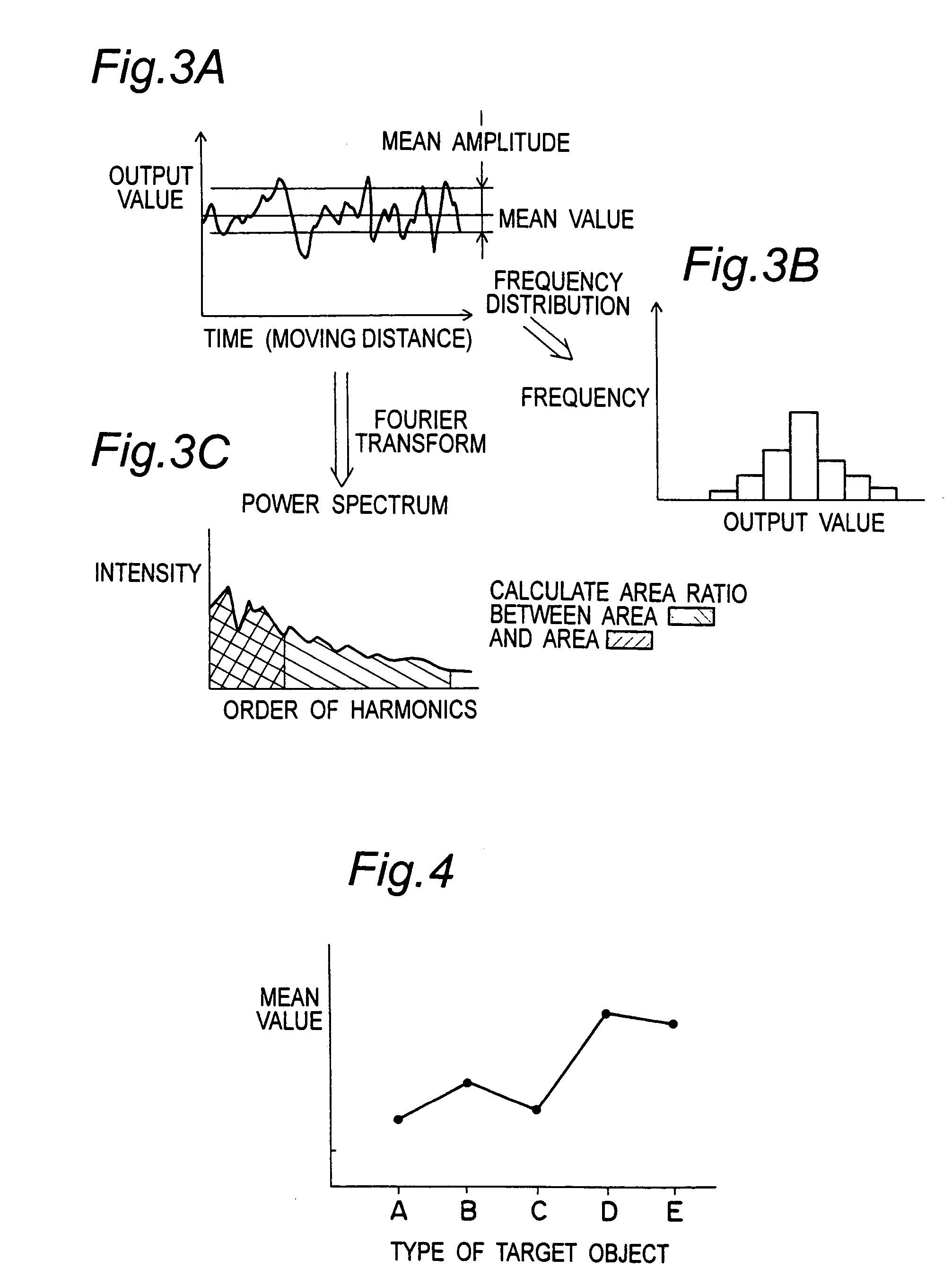Optical object identification apparatus, and printing apparatus and object classification apparatus using same
a technology of object identification and printing apparatus, which is applied in the direction of electrographic process, instruments, transportation and packaging, etc., can solve the problems of conventional methods for detecting the type of recording media, deformation of recording media, and failure to detect failure due to the deterioration of contact sections
- Summary
- Abstract
- Description
- Claims
- Application Information
AI Technical Summary
Benefits of technology
Problems solved by technology
Method used
Image
Examples
first embodiment
[0073](First Embodiment)
[0074]FIG. 1 is a schematic diagram showing an optical system in an optical object identification apparatus of the present embodiment. The optical object identification apparatus has at least one light emitting-side optical system 23 including a light emitting device (preferably a semiconductor laser) 21 and an objective lens 22, and at least one light receiving-side optical system 26 including a light receiving lens 24 and a light receiving device 25. By irradiating light emitted from the light emitting-side optical system 23 to a target object 27, a light spot 28 having a predetermined spot diameter (not more than 50 μm) is formed on the target object 27 moving in an arrow direction, so that reflected light from the light spot 28 enters the light receiving-side optical system 26.
[0075]Hereinbelow, detailed description will be given of the light emitting-side optical system 23 and the light receiving-side optical system 26. As shown in FIG. 2, in the light e...
second embodiment
[0090](Second Embodiment)
[0091]FIG. 10 is a schematic diagram showing optical systems in an optical object identification apparatus different from that in FIG. 1. The optical object identification apparatus in the present embodiment has a light emitting-side optical system 53 including a light emitting device (preferably a semiconductor laser) 51 and an objective and light receiving lens 52. By irradiating light emitted from the light emitting-side optical system 53 to a target object 54, a light spot 55 having a specified spot diameter (not more than 50 μm) is formed on the target object 54 moving in an arrow direction, and after reflected light from the light spot 55 is condensed by the objective and light receiving lens 52, the light is brought incident to the light receiving device 57 with its optical axis bent 90 degrees by a beam splitter 56. More specifically, the light receiving-side optical system is composed of the objective and light receiving lens 52, the beam splitter 5...
third embodiment
[0097](Third Embodiment)
[0098]FIG. 11 is a schematic diagram showing optical systems in an optical object identification apparatus of the present embodiment. The optical object identification apparatus in the present embodiment has one light emitting-side optical system 63 including a light emitting device (preferably a semiconductor laser) 61 and an objective lens 62, and two light receiving-side optical systems composed of a first light receiving-side optical system 66 including a light receiving lens 64 and a light receiving device 65, and a second light receiving-side optical system 69 including a light receiving lens 67 and a light receiving device 68. In this case, these two light receiving-side optical systems 66, 69 are disposed such that an angle α between an optical axis of one of these two light receiving-side optical systems 66, 69 (the first light receiving-side optical system 66 in the case of FIG. 11) and a target object 70 is equal to an angle α between an optical ax...
PUM
| Property | Measurement | Unit |
|---|---|---|
| diameter | aaaaa | aaaaa |
| length of time | aaaaa | aaaaa |
| frequency | aaaaa | aaaaa |
Abstract
Description
Claims
Application Information
 Login to View More
Login to View More - R&D
- Intellectual Property
- Life Sciences
- Materials
- Tech Scout
- Unparalleled Data Quality
- Higher Quality Content
- 60% Fewer Hallucinations
Browse by: Latest US Patents, China's latest patents, Technical Efficacy Thesaurus, Application Domain, Technology Topic, Popular Technical Reports.
© 2025 PatSnap. All rights reserved.Legal|Privacy policy|Modern Slavery Act Transparency Statement|Sitemap|About US| Contact US: help@patsnap.com



